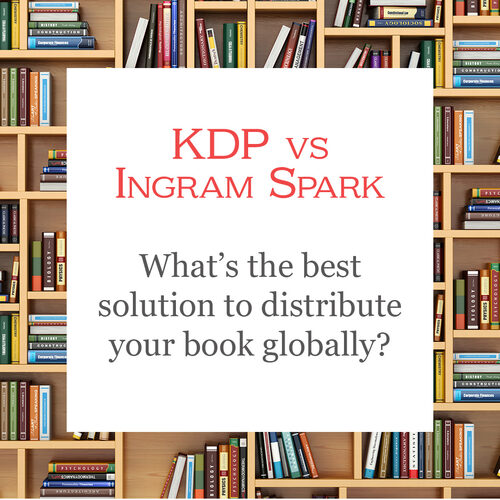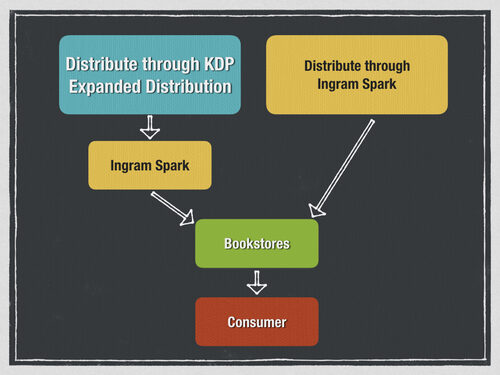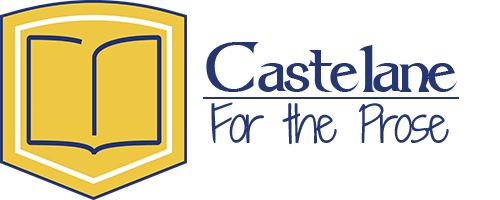 As a publishing coach, I spend a lot of time walking new authors through the series of steps required to get their book up for sale, so I know how overwhelming the process can be. One question that comes up every time is, “Should I choose KDP’s expanded distribution for my paperback or not?”
As a publishing coach, I spend a lot of time walking new authors through the series of steps required to get their book up for sale, so I know how overwhelming the process can be. One question that comes up every time is, “Should I choose KDP’s expanded distribution for my paperback or not?”
The answer is, “It depends on you.”
That might not seem very helpful, but bear with me. I’ll explain the optimal way to get your books into distribution, and then some reasons why you might choose not to go this route. This is a long post, but I hope it will clarify a murky topic for many. It’s important to clearly understand your options because if you choose to tick that box beside expanded distribution, it’s not easy to undo.
Also, remember that this expanded distribution feature is only for your paperbacks. You will need to find another distributer for eBooks (I’ll talk about this in another blog post).
First, what exactly is expanded distribution? KDP’s help manual describes it as:
Booksellers and libraries purchase paperbacks from large distributors. If you
enroll your paperback in Expanded Distribution, we'll make your book available to distributors so booksellers and libraries can find your book and order it.
Sounds like a great idea. Does it mean that your book will be in every library and bookstore? No. KDP goes on to say:
Enrolling your paperback in Expanded Distribution doesn't guarantee it will be ordered by a particular bookseller or library. The decision to order your book lies solely with the individual booksellers and libraries.
Your book will be available to order from other retailers, such as Barnes and Noble or Chapters/Indigo, but it won’t be in their stores. You may be able to persuade a local retailer or libraries, but that would be up to the individual store manager or librarian.
And how does KDP get your book into these retail and library systems? They send it to Ingram Spark, a global book distributer who then puts your ISBN into their distribution system.

Still, it seems like a good option. But there is a better way. Why not go directly to the distributer? Independent authors can now open an account with Ingram Spark and cut out KDP as the middleman. Going this route has advantages and disadvantages.
Pros of distributing your book through Ingram Spark
1. Returnable books
Large publishers allow bookstores to return (or destroy) unsold books. This allows bookstores to shelve new and untested books without fear of being stuck with unsold stock. For years, indie authors were at a disadvantage because their books were not returnable and so bookstores refused to order them.
Ingram Spark gives you the option to make your book returnable. If the store returns the book, you can choose to have it shipped to you (you pay the shipping cost) or have it destroyed. Some authors panic, thinking a store might order 100 copies and then stick the author with the return bill. In reality, a bookstore won’t ever order your book unless a customer specifically requests it, so the chances of getting stuck with a huge bill are slim. However, if you want to do book signings at a local bookstore, they may refuse to order your book if it isn’t returnable.
(Note: books ordered through KDP’s expanded distribution are not returnable.)
2. Better royalties
It makes sense that cutting out KDP as the middleman means you will enjoy better royalties on your books that are distributed to other bookstores through Ingram Spark. In fact, with Ingram Spark, you set the wholesale discount for your book.
Let’s look at an example of royalties for a paperback of 150 pages with a retail price of $15.00 (USD):
$6.35 - KDP royalties for regular distribution (i.e., to Amazon.com)
$3.35 - KDP royalties for expanded distribution (i.e., to other bookstores and libraries)
$3.72 - Ingram Spark royalties (with a standard 55% wholesale discount offered to the retailer).
Now the difference between KDP's expanded distribution and Ingram Spark distribution doesn’t seem like much, over time, it will made a difference. Also, you can opt for a lower wholesale discount, but book retailers generally expect 55% and may choose not to stock your book for less.
The big difference is that with the KDP expanded distribution, the retailer is not getting the 55% discount. At most, they’ll be getting 25% so that KDP can make their cut. So both you and the retailer are losing out to the KDP middleman. This means that the chance of a bookstore stocking your book are almost nil with KDP’s expanded distribution, even if you personally contact your local stores for book signings.
3. Printing in Canada
This advantage is obviously only for Canadian indie authors, but it is a big one. If you order author copies of your paperback through KDP, they will be printed in the U.S., and you will pay hefty shipping and duty fees.
Ingram Spark prints through Lightning Source in Etobicoke, Ontario. This means faster delivery, lower shipping costs and no duty.
Let’s take a look at a recent book order as an example. I ordered 32 copies of my Hidden Coven book from Ingram Spark on April 10th. I was charged $33.72 shipping (it’s a big fat book) and received my copies on April 16th. That means Ingram Spark printed and shipped my books in 6 days.
If I placed the same order with KDP, my shipping would be a whopping $78 and customs would tack on another $15 in duty. Also, Amazon takes 5 days just to print the book and estimates delivery between 16 and 26 days (and in my experience, it’s usually the latter). It should be noted that these prices are in Canadian funds, but even though Ingram Spark ships from Canada, they bill in USD. Also, the cost of my book is slightly higher from Ingram Spark, but the shipping more than makes up for it.
Cons of distributing your book through Ingram Spark
1. Fees
Ingram Spark charges $49.00 (USD) to upload your book and put it in their distribution system. Furthermore, once you approve the proof and make it available for distribution, they will charge you another $25.00 (USD) fee if you need to make changes to the cover or interior.
Since KDP’s publishing platform is free, I suggest uploading it there first and getting a physical proof from KDP, making any required adjustments and then uploading it to Ingram Spark.
About twice a year, Ingram Spark waives their upload fee for a short time. It’s worth opening an account even if you're not ready to publish, so you’ll be notified when these sales happen.
2. Cover adjustment
KDP and Ingram Spark use different paper weights (KDP’s is slightly thicker). This means that most paperbacks will need to have the cover adjusted for the spine width. If you’re a paying a designer to create your cover, this may incur extra fees. (Note: Castelane’s Paperback Cover Design service includes the cover for KDP and Ingram Spark for one low fee.)
3. ISBN
Free ISBN’s are available through KDP, but you won’t be able to use that ISBN for your Ingram Spark paperback. You will need to purchase your ISBN through Bowker (don’t buy them from a third party. Bowker is the only official ISBN merchant in the U.S.). In Canada, ISBN’s are available for free at Library and Archives Canada.
I don’t really consider this a disadvantage because you should always obtain your own ISBN’s rather than use the free KDP numbers. With the free ISBN from KDP, the publisher field will read “Independently Published,” which isn’t the optimal choice when trying to entice readers and booksellers. When you obtain your own IBSN, you become the publisher of record. You may also opt to create an imprint label for your publishing house.
For me, the advantages to distributing with Ingram Spark outweigh the disadvantages, but I don’t always suggest going this route for my clients. Opening a second account at Ingram Spark is a hassle. It means more paperwork and another bank/tax survey to fill out. There are fees to upload your cover and interior files to Ingram Spark and there may be fees to adjust the cover design. If you aren't publishing to make money (i.e., your book is mostly for personal satisfaction), these fees might be too high to bother with. For authors who aren’t computer savvy, the Ingram Spark interface can be daunting. Finally, if you live in the U.S. and can order author copies from Amazon with minimal shipping, then the slight advantage in royalties might not be worth the extra work. It’s all about your comfort level and your goals as an author.
To summarize, KDP’s expanded distribution might be the right option for you if any of the following apply to you:
• your goal is to get your book up for sale as quickly as possible with the minimal fuss
• you don’t plan to do author signings at local bookstores
• you don’t want to buy an ISBN
• you live in the U.S.
But going with Ingram Spark is the better solution if any of the following apply to you:
• you want to maximize your royalties
• you plan to do author signings at bookstores
• you want to make your book attractive to as many retailers and libraries as possible
• you live in Canada
Here are a couple of handy calculators for determining your royalties and print costs.
KDP calculator
Ingram calculator
If you have any questions about your options for distribution or any other publishing topic feel free to drop me a line at ask@castelane.com.
If Kim McDougall could have one magical superpower, it would be to talk to animals. Or maybe to shift into animal form. Definitely, fantastical creatures and magic often feature in her urban fantasy stories. So until she can change into a griffin and fly away, she writes dark paranormal suspense and romance tales full of witches, demons, werewolves, vampires, yetis and maybe even a gargoyle or two.
Kim McDougall is the author of the Hidden Coven series and Revise to Write, Edit Your Novel, Get Published and Become a Better Writer. She is also a publishing coach and book designer at Castelane, For the Prose.
